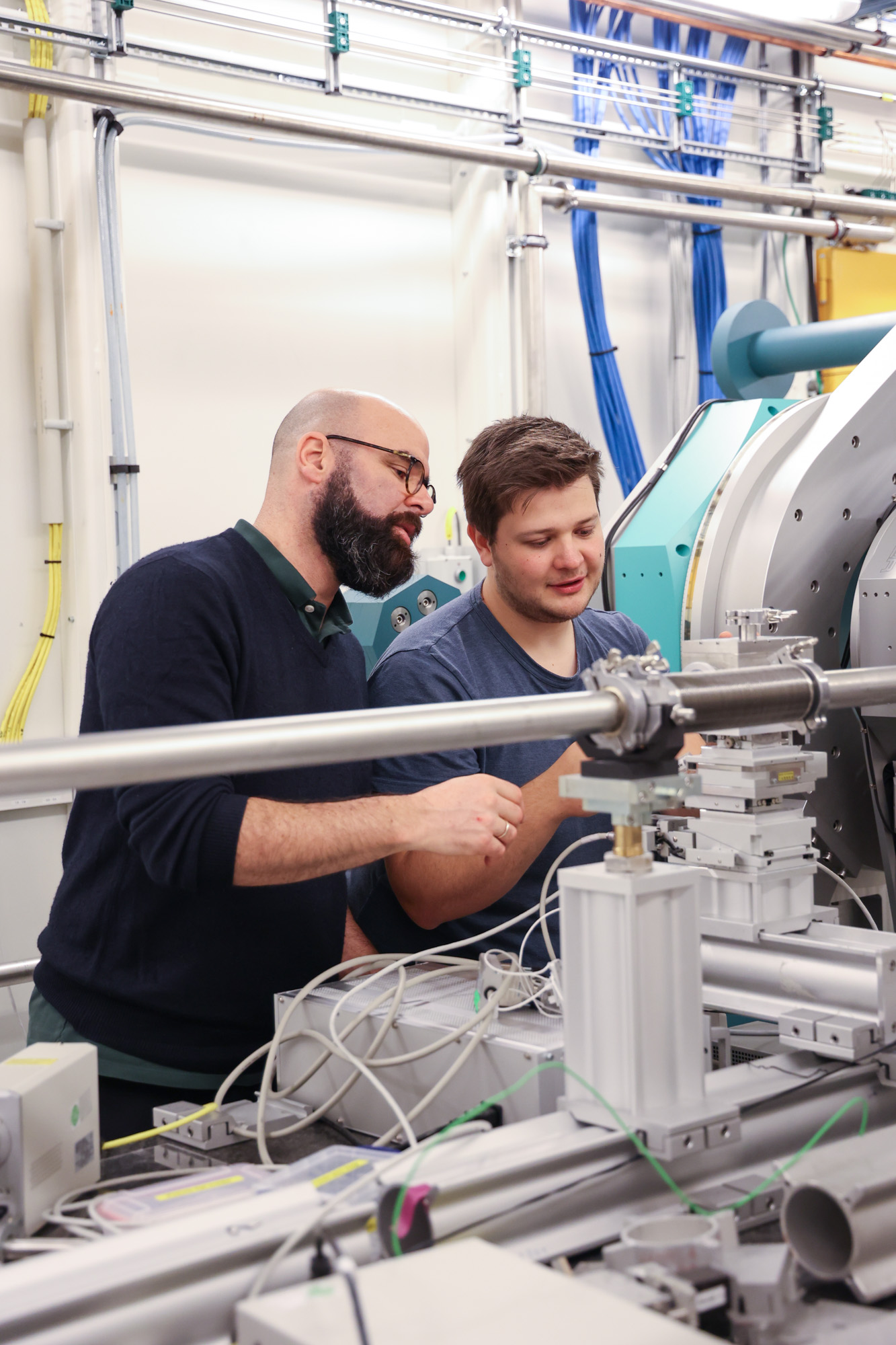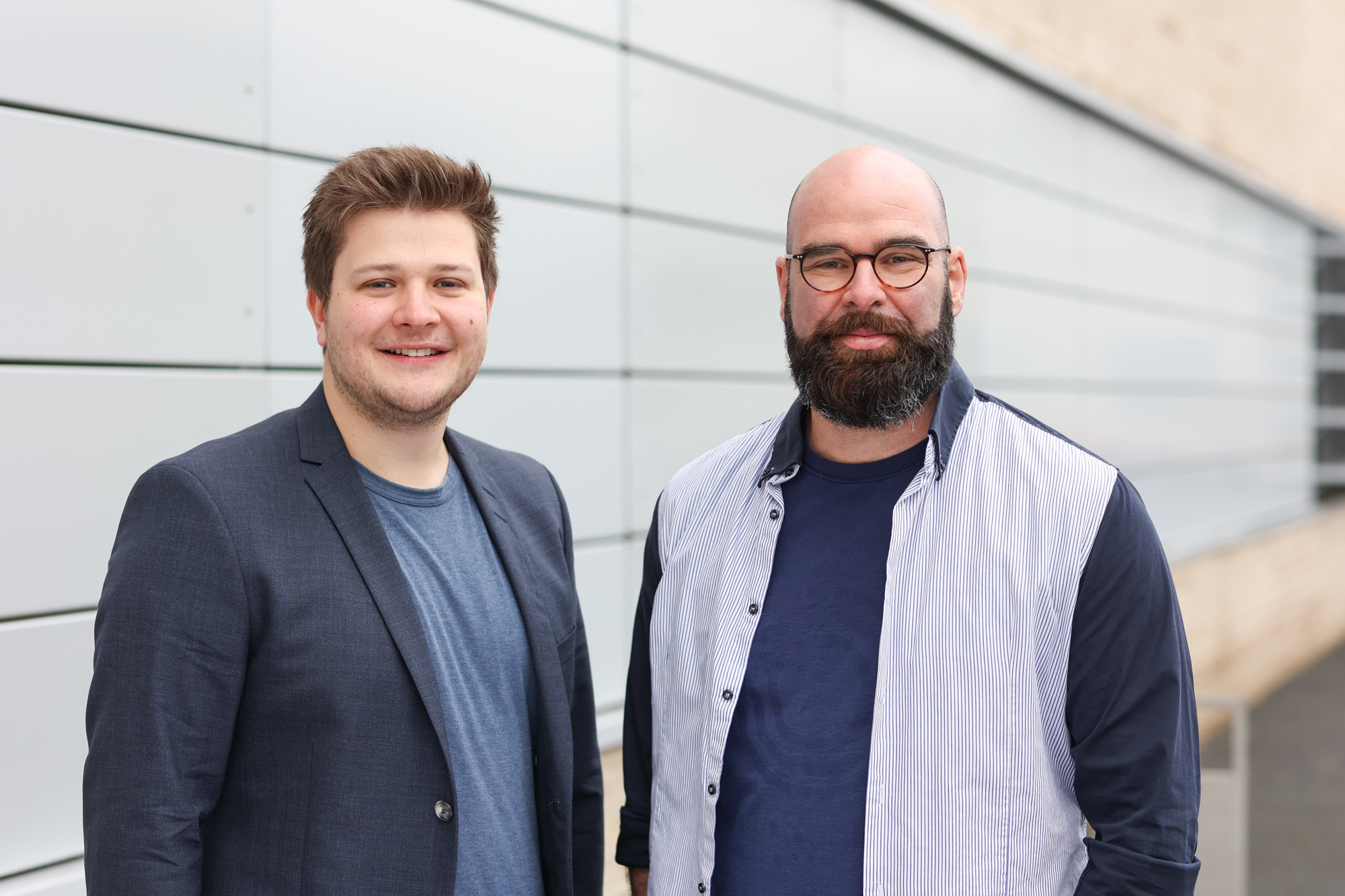TXproducts
There certainly aren't too many devices – luxury watches aside - that are no bigger than half a shoebox but worth as much as a brand-new Porsche. TXproducts, a two-man startup founded in April 2021 that has set up its lab and office in the DESY Innovation Village, is building such a device. It is called WaveGate and is to be fully developed into a demonstrator by February 2022 with the help of funding from the Investitions- und Förderbank Hamburg (ifb).
WaveGate has one goal: to provide insights for science. The asset is for those researchers who work with synchrotron radiation. A synchrotron is a huge particle accelerator that produces high-energy X-rays. This radiation is directed to several experimental stations, known as beamlines, where it is used to expose material samples. In this way, scientists from research and industry can study many different structures and processes at the molecular level: for example, how active ingredients react with the body's cells in a tissue sample or how superconductors and other electronic components behave under different conditions. The measurements can be used to optimize computer chips, identify the structures of viruses and develop new drugs in a targeted manner. Even whether a Rembrandt painting is original or a fake can be determined at a synchrotron.
The catch is that synchrotrons always provide their enormously bright, pulsed X-ray beam at a defined strength and pulse frequency for a certain time, which is often not suitable for each of the 30 or even 40 experiments connected to them. Therefore, researchers at the stations must either work with filters and switches to modulate the beam. Or they must wait for a specific beam time from the large-scale facility that suits their needs. Their project can thus be delayed by weeks or even months. Long story short: It's much better to customize the beam. "There are already good solutions for the energy and size of the beam," says Peter Gaal, one of the two founders of TXproducts. "But not for the time structure."

Managing X-rays: WaveGate
This is exactly where WaveGate comes into play: The small box can be easily interposed in a beamline and enables the time structure of the X-ray beam to be matched to the experiment in question. The most important element of WaveGate are lithium niobate crystals. These are piezoelectric crystals that can be found as signal filters in any modern cell phone, but also in sensors for detecting viruses, for example. Such crystals generate an electrical voltage when they deform, and conversely can be specifically deformed by applying an electrical voltage to them.
Now, when the X-ray beam hits the surface of the crystal at a frequency of, say, one pulse every 200 nanoseconds, the switch can emit a high-frequency electrical signal that the crystal receives with tiny antenna-shaped structures that TXproducts has applied to its surface and converts into surface sound waves. The same kind of sound waves are generated by earthquakes. So the switch triggers a kind of earthquake within the crystal, which changes the crystal's lattice structure. This changed surface structure reflects the X-ray beam at a different angle. "With WaveGate, we can control the diffraction of the X-ray beam and thus select certain pulses of the beam and sort out the others," says the other founder Daniel Schmidt. "For example, if I don't need the pulse every 200 nanoseconds, but only one per millisecond." To give an idea of how fast the switch works, a comparison: light travels a distance seven times around the equator in one second. WaveGate can turn the X-ray beam on and off so quickly that the light travels only 30 meters in the same time.
This precision is extremely important for the complex experiments at synchrotrons. That's because for many samples, too much radiation is harmful; they can withstand only a few pulses before decaying. "Some processes that I want to observe also only last as long as a single pulse," Schmidt says. "In this case, I have to isolate a single pulse and can't use subsequent pulses at all." With WaveGate, scientists at the beamline can dose both the amount of incident X-ray light and the frequency of its pulses. And it's as variable as a Swiss army knife: The switch allows different settings and can be used for different experiments. This is where it differs from previous solutions. Conventional optics for adjusting the time structure are usually rigid and can therefore only be used for one type of experiment. Incidentally, they are still significantly more expensive than WaveGate.
With WaveGate, many synchrotron experiments can be performed much faster and more cost-effectively. "Work that used to take an hour and cost 1,000 euros can now be done in half a minute for 10 euros," says Peter Gaal. This benefits not only the researchers themselves, he adds, but also the operators of the synchrotron, as they can better utilize their beamlines. Gaal estimates that about 30 percent of the experiments at synchrotrons benefit from this. Some even become possible at all as a result.

Product Idea and Founding
Peter Gaal had the idea for WaveGate for quite some time. He is a scientist at the Leibniz Institute for Crystal Growth (IKZ) in Berlin, where he heads the X-ray optics group. In principle, IKZ and DESY complement each other ideally: At IKZ, crystals are developed that are needed for research at a synchrotron like the one DESY operates. Conversely, research at DESY provides answers to the question of how crystal growth can be improved. That's why the IKZ also recently established a JointLab with the Hamburg research center on the DESY campus to intensify cooperation. A device like WaveGate can boost the results of the collaboration significantly.
"However, I initially had too little time besides teaching and research to pursue the idea," Gaal recalls. "I needed a partner." This is where Daniel Schmidtcomes in. Daniel was a student in Gaal's research group, which he led as a substitute professor at the University of Hamburg. "Daniel brought everything we needed for our project: He's a specialist in nano-research and temporally high-resolution X-ray and laser technology - but above all, he has the drive and ambition needed to really push something like this forward."
By being located in the DESY Innovation Village, the two benefit from many synergy effects: For one, there are beamline researchers at DESY's PETRA III X-ray radiation source who are just waiting for WaveGate to be ready so they can use it. "They will be our first customers, accompany our development and enable us to test the device without having to apply for beam time every time," says Daniel Schmidt. In addition, he says, he and Gaal will be able to exchange ideas with other founders on campus and find suitable new collaborators, as well as receive help from the DESY Start-up Office on business issues. "Actually, the Start-up Office helped us to get started with in the first place," Gaal says.
The need for WaveGate is obvious: There are more than 50 synchrotrons worldwide, each with multiple beamlines connected to it. The gain in flexibility and efficiency for their work should convince many operators and beamline researchers. When the demonstrator is ready, its two developers plan to visit synchrotrons around the world to showcase their new technology. First sales are planned for 2023.
But that's not all. Gaal and Schmidt have long been tinkering with other switching devices. Next up is PicoSwitch to add to WaveGate's enormous speed. Using the analogy of a beam of light racing around the earth seven times in one second, PicoSwitch switches the light on and off within the width of a pin. That's five to ten picoseconds (trillionths of a second). This will even allow researchers to study processes that occur faster than the length of one of the X-ray pulses itself - such as how the molecules in the retina of an eye deform when light falls on them. There is also a great need for this in modern research with X-rays and lasers. The other product TXproducts is planning is to be called NanoGate. It will work similarly to WaveGate, but will be usable at other light spectra.
With all these plans, the photon science community would sure be excited to hear more from TXproducts.

